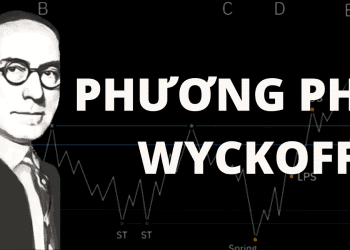Hiệu ứng của cải là một hiện tượng kinh tế quan trọng ảnh hưởng đáng kể đến quyết định chi tiêu và tiêu dùng của các nhà đầu tư cá nhân. Khi giá trị tài sản tăng, nó góp phần làm tăng tổng cầu và phát triển kinh tế. Bài viết này phân tích những tác động của hiệu ứng của cải đối với bất bình đẳng tài sản qua Matthew Effect và chính sách thuế tài sản (Wealth Tax). Mỗi chương sẽ cung cấp cái nhìn sâu sắc giúp bạn hiểu và ứng dụng chiến lược tài chính cá nhân hiệu quả hơn.
Nội dung bài viết
The Interplay of Matthew Effect and Wealth Inequality within the Wealth Effect Dynamics

In the intricate web of economic phenomena, the Wealth Effect stands as a pivotal mechanism that impacts individual spending and broader economic dynamics. When dissecting the layers of this effect, we discover an interlinked relationship with the Matthew Effect and Wealth Inequality, two seemingly abstract concepts that manifest distinct but interconnected economic realities.
The term Matthew Effect derives from the sociological insights of Robert K. Merton, underscoring the adage that the “rich get richer.” This effect emphasizes how initial advantages in wealth, status, or opportunity can multiply over time, enabling those with resources to accumulate even more wealth. This cycle creates a feedback loop—success breeds further success. Within the realm of economics, the Matthew Effect illustrates how financial growth can disproportionately benefit those who are already wealthy, thereby amplifying existing disparities.
Coupled with this is Wealth Inequality, a phenomenon that addresses the uneven distribution of assets, savings, and investments across different societal layers. It reflects the disparities in resource accessibility that hinder equal economic opportunity and mobility. Wealth Inequality can stifle social mobility, limit educational opportunities, and ultimately, engender societal tension. The concentration of wealth can suppress the robust flow of economic benefits across a broader demographic, leading to economic and social stratification.
The Wealth Effect emerges as a catalyst in this narrative. As asset values fluctuate—be it through real estate appreciation or stock market surges—individuals experience a tangible shift in perceived wealth. This perception often drives consumer behavior, fueling spending and investment activities. However, this effect disproportionately favors those who already possess significant assets, as they stand to gain more from increased asset valuations. For instance, homeowners and stockholders can amplify their expenditure when market conditions are favorable, hence experiencing what might be termed a “wealth windfall.”
The synergy between the Matthew Effect and Wealth Effect can reinforce Wealth Inequality. As affluent individuals capitalize on positive asset fluctuations through the Wealth Effect, they not only augment their financial standing but also entrench their economic advantage. Those without substantial assets may not experience the same uplift, thereby falling further behind in relative wealth accumulation. This dynamic perpetuates a cycle where the Matthew Effect and Wealth Inequality feed back into each other, consolidating wealth within specific groups and making it increasingly challenging for others to bridge the gap.
Moreover, the implications of this interplay stretch beyond individual fortunes. A skewed distribution of wealth affects economic growth and stability. When wealth is concentrated in the hands of a few, the overall potential for consumer-driven economic expansion diminishes. The absence of widespread wealth effect benefits across a diverse population can result in a stagnant demand, reducing incentives for production and innovation.
Thus, understanding this interplay requires acknowledging the structural economic policies and societal frameworks that either exacerbate or mitigate these effects. Addressing the compounding nature of wealth disparities as illustrated through thorough policy analysis could pave the way for more inclusive economic growth. Without such interventions, the synergy between the Matthew Effect, Wealth Inequality, and the Wealth Effect threatens to hamper economic potential by keeping the pathways of wealth and opportunity clumped at the top.

The concept of wealth tax has been implemented by several countries as a means to address economic disparities and bolster public finances. However, its implications on the wealth effect—the economic phenomenon where shifts in asset values affect consumer spending—merit a closer look.
As defined, a wealth tax imposes a levy on the net worth of an individual, inclusive of real estate, stocks, bonds, and other assets. Its primary aim is to curb income inequality and enhance revenue generation. Nations like France, Sweden, and Spain have experimented with wealth tax to varying degrees of success.
Impact on Consumer Spending
Introducing a wealth tax can lead to a decrease in consumer spending. This reduction happens because the net asset value of individuals subject to this tax sees a decline, prompting a cautious approach to expenditure. The correlation between perceived wealth and spending behavior is foundational to the wealth effect; thus, any decrease in perceived wealth due to taxation can influence broader economic activity. This aspect is particularly pertinent during economic downturns, where maintaining consumer spending is crucial for economic recovery. For insights on economic downturns, see this discussion on global economic slowdowns.
Effects on Asset Markets
Wealth taxes can impact asset markets by decreasing the appeal and profitability of holding real estate and financial assets. As asset holders face increased tax burdens, some may opt to divest or reduce investments in these areas. This potential pullback can exert pressure on asset prices and temper market growth, which might further affect individual wealth perceptions and associated spending.
Shifts in Economic Behavior
The imposition of a wealth tax can stimulate shifts in economic behavior among asset holders. Faced with the prospect of substantial tax liabilities, individuals and organizations might engage in financial maneuvering. Techniques such as offshoring assets or deploying complex financial instruments to minimize tax exposure could become more prevalent. Such strategies, while lawful, increase complexity and administrative costs within the tax system and could exacerbate issues of inequity.
Addressing Income Inequality
While wealth taxes aim to bridge the disparity gap, their effectiveness hinges on careful design and implementation. If implemented poorly, the desired outcome of reduced inequality may not materialize. Factors such as tax thresholds, exemptions, and enforcement play pivotal roles. A nuanced approach is crucial to ensure the wealth tax serves its intended purpose without unintended economic repercussions.
The nuanced balance between leveraging a wealth tax to encourage equitable wealth distribution and minimizing its dampening effects on the wealth effect is complex. Policymakers must consider the broader economic and social contexts to navigate these challenges effectively. A comprehensive strategy is essential to harness the intended benefits while mitigating potential downsides, thereby ensuring that wealth taxes contribute positively to societal and economic well-being.
Final thoughts
Hiệu ứng của cải không chỉ tác động sâu rộng đến nền kinh tế mà còn gây ra sự bất bình đẳng tài sản bởi Matthew Effect. Đồng thời, Wealth Tax xuất hiện như một giải pháp tiềm năng làm giảm hiệu ứng này bằng cách kiểm soát giá trị tài sản. Hiểu rõ các yếu tố này sẽ giúp nhà đầu tư đưa ra những quyết định thông minh hơn trong quản lý tài sản cá nhân.
Bạn muốn quản lý tài chính hiệu quả và đầu tư thông minh hơn? Hãy khám phá ngay những giải pháp tối ưu trên trananhthuc.com và bắt đầu hành trình tự do tài chính ngay hôm nay!
Learn more: https://www.trananhthuc.com/lien-he/
About us
trananhthuc.com cung cấp giải pháp tài chính, đầu tư và tín dụng ngân hàng, giúp bạn quản lý dòng tiền hiệu quả, tối ưu hóa vốn vay và gia tăng lợi nhuận. Chúng tôi chia sẻ những chiến lược thực tế, công cụ hữu ích và kiến thức chuyên sâu để bạn chinh phục tự do tài chính. Khám phá ngay để đưa ra quyết định thông minh và tận dụng tối đa cơ hội đầu tư!







